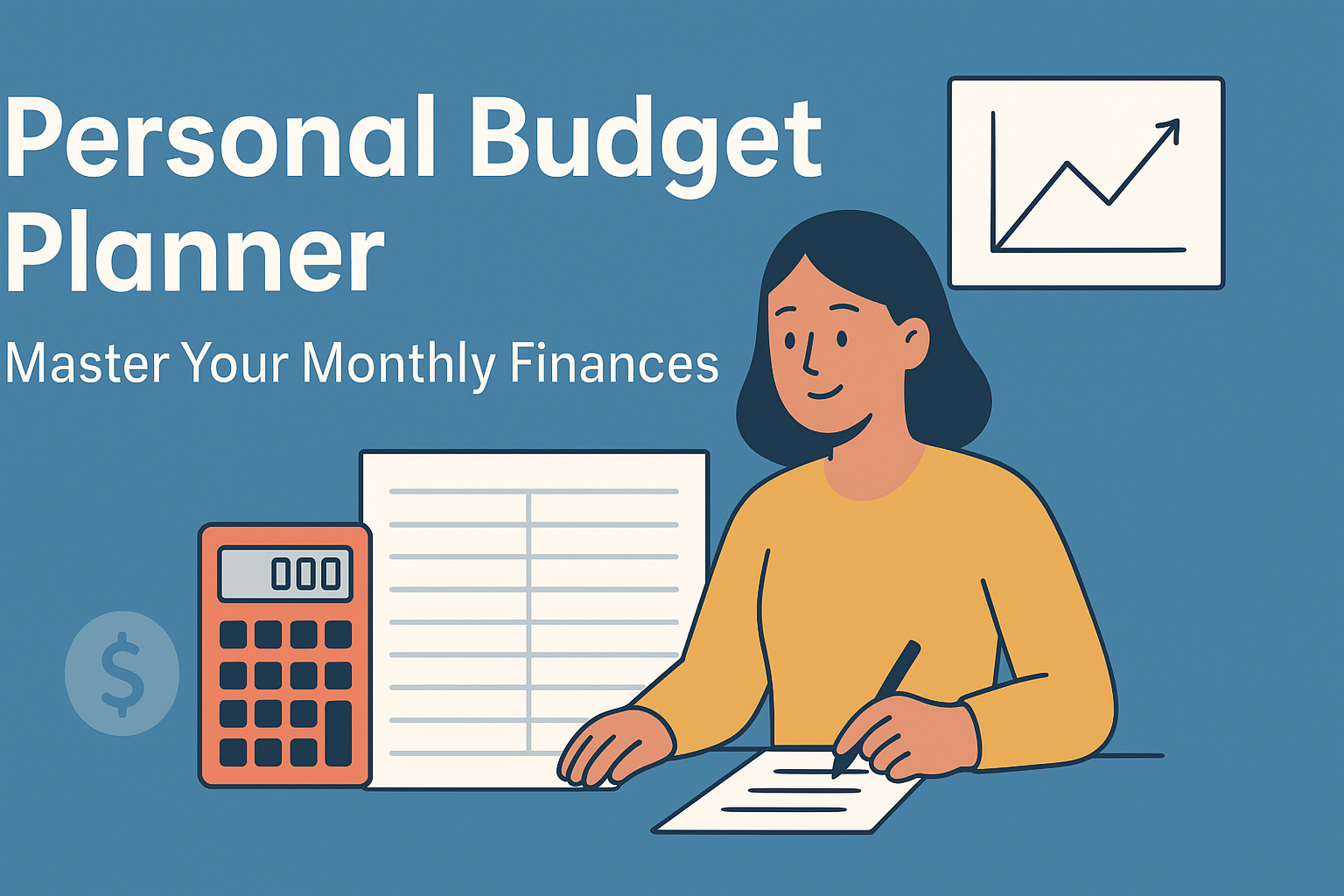Personal Budget Planner – Master Your Monthly Finances

Introduction
A Personal Budget Planner is more than just a spreadsheet or app—it’s a financial command center that helps you decide where every dollar goes. Whether you’re trying to get out of debt, save for a big goal, or simply reduce financial stress, a budget planner provides the clarity you need.
In this guide, we’ll explore:
- What a budget planner is and why it matters
- How to set it up step-by-step
- Advanced budgeting strategies
- Common mistakes and how to avoid them
By the end, you’ll have a repeatable budgeting process that keeps you in control every month.
Why Budgeting Matters
Without a plan, money tends to “disappear” into daily expenses, leaving little for savings or debt repayment. Budgeting:
- Creates awareness of your spending patterns.
- Helps you align spending with priorities.
- Prevents debt from spiraling out of control.
- Reduces financial stress by removing uncertainty.
Statistic: According to the National Foundation for Credit Counseling, 60% of Americans don’t keep a budget—yet those who do are more likely to achieve their financial goals.
Step-by-Step Setup
Step 1: List All Income Sources
Include:
- Salary (after tax)
- Side hustle earnings
- Investment income
- Irregular bonuses
Step 2: Categorize Expenses
Break them into:
- Fixed expenses: rent/mortgage, insurance, utilities
- Variable expenses: groceries, gas, dining
- Discretionary: streaming services, hobbies, entertainment
Step 3: Set Targets for Each Category
For example:
- Housing ≤ 30% of income
- Savings ≥ 20% of income
- Debt repayment ≥ 10% of income
Step 4: Track Spending
Use:
- Apps like Mint, YNAB, or spreadsheets
- Bank and credit card statements
- Weekly expense review
Step 5: Adjust Monthly
At the end of each month, compare your budget to actual spending and tweak for the next month.
Advanced Budgeting Strategies
- Zero-Based Budgeting – Assign every dollar a job until you reach zero.
- 50/30/20 Rule – 50% needs, 30% wants, 20% savings.
- Envelope System – Allocate cash into envelopes for specific expenses.
- Reverse Budgeting – Save first, spend what’s left.
Real-Life Case Study
Case: Sarah, a 32-year-old marketing manager, used a budget planner to:
- Reduce dining-out expenses from $600 to $250 per month
- Increase savings from $200 to $900 per month
- Pay off $8,000 in credit card debt in 14 months
Key Takeaway: Visibility + intentional planning = results.
Common Mistakes to Avoid
- Being too restrictive: Unrealistic limits cause burnout.
- Not accounting for irregular expenses: Such as car repairs, holidays.
- Ignoring small leaks: Daily coffee or app subscriptions can add up.
- Failing to review: Budgeting isn’t “set and forget.”
Tools and Resources
- Apps: Mint, YNAB, EveryDollar
- Spreadsheets: Google Sheets templates
- Books: Your Money or Your Life, The Total Money Makeover
FAQ
Q: How often should I review my budget?
A: Weekly mini-reviews + monthly deep dives work best.
Q: Can budgeting work for irregular income?
A: Yes—base your budget on your lowest expected income and adjust when you earn more.
Q: Is a budget planner better than a budgeting app?
A: Both work—choose the one you’ll actually stick with.
Conclusion
A Personal Budget Planner transforms financial chaos into a clear action plan. By tracking income, categorizing expenses, and regularly reviewing progress, you can align your spending with your goals—and enjoy peace of mind knowing you’re in control.